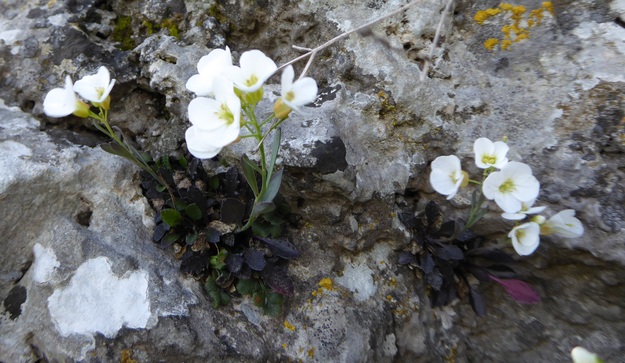The merger of two polyploids is better than the sum of their parts
 Polyploid Arabidopsis lyrata from the eastern Austrian Forealps, with adaptive alleles of its congener Arabidopsis arenosa that enable it to be a fit polyploid. Adaptive introgression became "visible" using population genomics and meiosis phenotyping.
Polyploid Arabidopsis lyrata from the eastern Austrian Forealps, with adaptive alleles of its congener Arabidopsis arenosa that enable it to be a fit polyploid. Adaptive introgression became "visible" using population genomics and meiosis phenotyping.
Whole genome duplication and hybridisation are key drivers of genomic novelty, promoting diversification in all kingdoms of life, and both processes have been associated with adaptive benefits. However, WGD and hybridisation are large effect mutations, often leading to a host of genomic instabilities, including epigenetic shock, perturbed gene expression patterns, and meiotic instability, with direct negative impacts on fertility. Perhaps the most challenging issue is the most immediate: that of stable meiotic chromosome segregation following WGD. How nascent polyploids establish meiotic stabilisation remains an open unresolved question, and while recognition of widespread gene flow is growing, examples lack of bidirectional gene flow mediating adaptations at specific loci that cooperatively manage core cellular processes, such as meiosis.
We conducted a population genomic study in combination with cytological analyses of meiotic stability to test the hypothesis that adaptation to WGD in the Brassicaceae Arabidopsis lyrata was mediated by adaptive gene flow with its congener Arabidopsis arenosa. Due to an endosperm-based postzygotic barrier, these two species hybridise only as tetraploids. Our analyses showed that A. lyrata underwent WGD more recently than A. arenosa, indicating that specific pre-adapted alleles donated by A. arenosa underwent selection, but at the same time, we detected specific signals of gene flow in the opposite direction at other functionally interacting gene-coding loci that displayed dramatic signatures of selective sweep in polyploid A. lyrata and A. arenosa. These data indicate that bidirectional gene flow allowed for survival of the young autopolyploids and suggest that the merger of these species is greater than the sum of their parts. It is curious that the very process that rescues fitness in these species, hybridisation, is potentiated by the same phenomenon to which the resultant adaptive gene flow responds: WGD.
Document Actions